Mary Dana Hinton, Ph.D., is the 13th president of Hollins University, officially installed on August 1, 2020. An active and respected proponent of the liberal arts and inclusion, her leadership reflects a deep and abiding commitment to educational equity and the education of women. Brief biographies of the 12 prior Hollins presidents are included below. Five others, listed at the bottom of this page, have served Hollins as interim presidents.
You can read more about President Hinton here:
-
Mary Dana Hinton, President, Hollins University
-
Pareena Lawrence 2017 – 2019
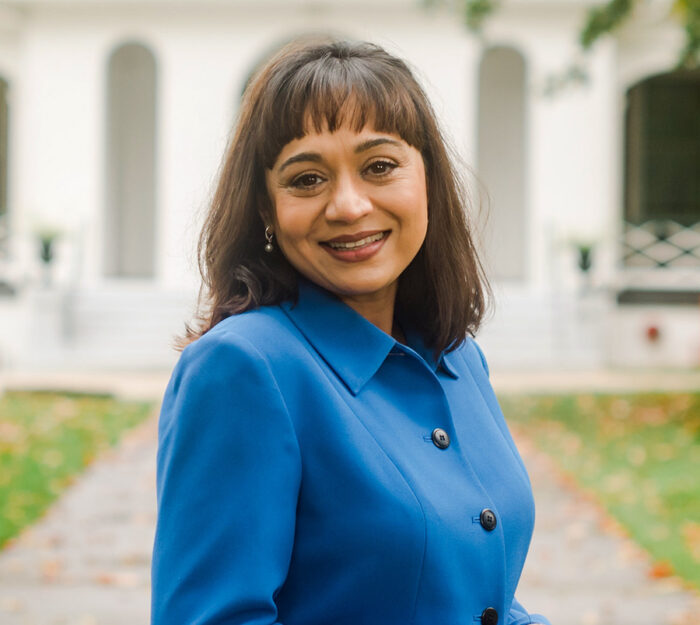
President Pareena Lawrence took office at Hollins in July 2017. She introduced the HU Connect program for underrepresented local students. She also transformed the career development office into “Career and Life Design.” Lawrence oversaw some academic changes, including the introduction of a major in public health, an undergraduate major in creative writing, and a redesign of the business and psychology majors. During her tenure, construction for a new student apartment village began, and was completed in 2020.
-
Nancy Oliver Gray 2005 – 2017

President Nancy Oliver Gray arrived at Hollins in January 2005. Under her leadership, Hollins completed a five-year strategic plan in 2011 that emphasized four hallmarks of its undergraduate experience: leadership development, global and cultural understanding, environmental and cultural sustainability, and creativity. A new strategic plan, Connecting Liberal Arts Education and Experience to Achieve Results, focused the university’s efforts through 2016. Hollins completed the largest comprehensive fundraising campaign in school history and the largest ever undertaken by a women’s college in the South, the Campaign for Women Who Are Going Places. The campaign successfully concluded in 2010 with over $161 million raised, far exceeding the goal of $125 million.
Gray also instituted a new major in environmental studies, and a new certificate program in leadership studies. An extensive seminar program was especially designed for first-year students. She oversaw several renovations on campus, including Swannanoa Hall (previously Starkie House), Turner Hall, and Beale Garden. The Hollins’ endowment grew from $85 million to nearly $165 million.
-
Nora Kizer Bell 2002 – 2004
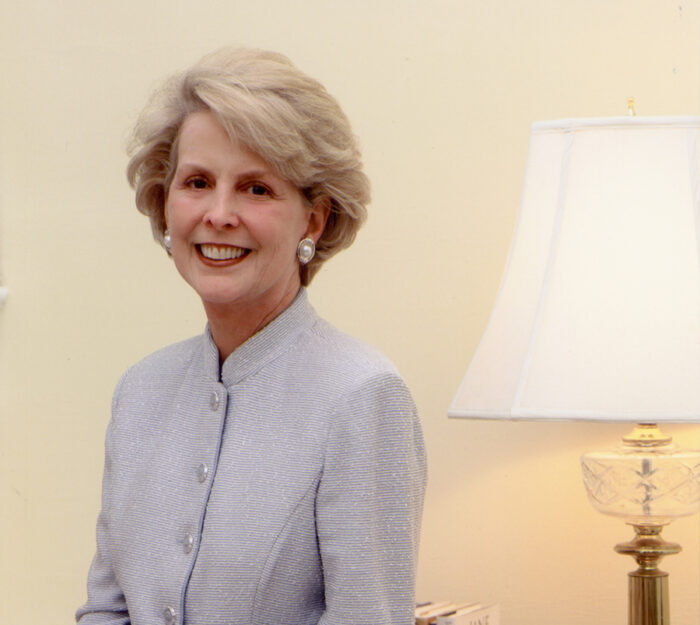
President Nora Kizer Bell was inaugurated on Founder’s Day, February 20, 2003. Presser Hall was renovated during her tenure, and construction to renovate Fishburn Library into the Wetherill Visual Arts Center was ramped up. To encourage the creation of an art museum within the Wetherill Visual Arts Center, Hollins alumna, Eleanor Delaney “Siddy” Wilson, class of 1930, left Hollins an estate gift of $5.5 million dollars. Bell also oversaw the first contract with a vendor to manage food services. Hollins was ranked #1 in quality of life by The Princeton Review.
-
Janet E. Rasmussen 1996 – 2001
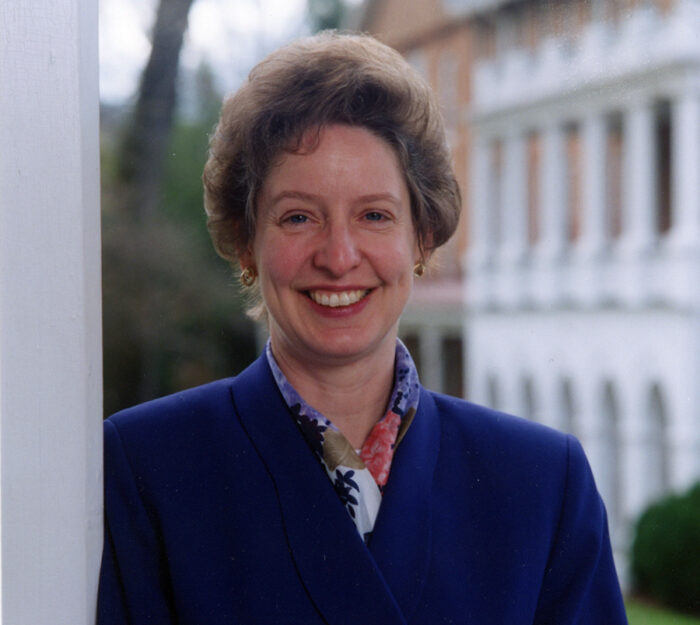
President Janet Rasmussen was inaugurated on November 8, 1996. During her tenure, Wyndham Robertson Library was constructed, Moody Center was renovated, and plans for the new fine arts center (Wetherill Visual Arts Center) began. Hollins College became a university in 1998. She also oversaw the establishment of a new M.A. program in screenwriting and film studies.
-
Jane Margaret “Maggie” O’Brien 1991 – 1996
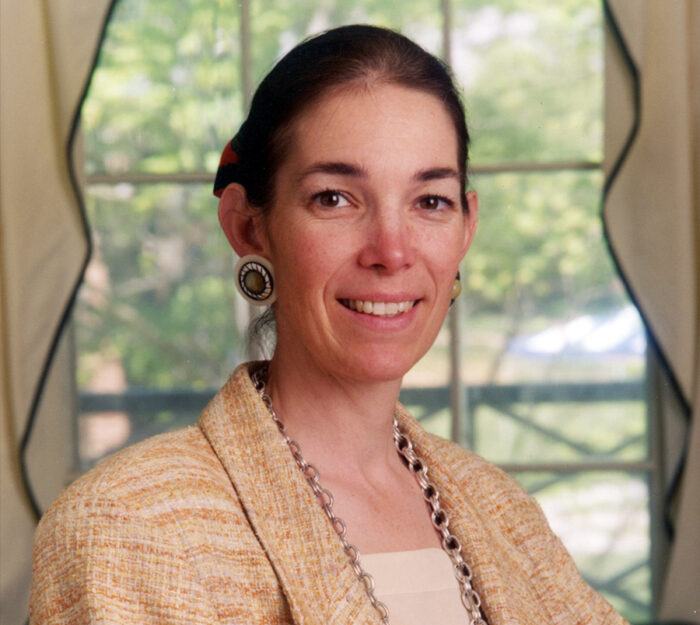
President Margaret “Maggie” O’Brien was inaugurated on April 11, 1992. During her tenure, a new front entrance and gates were built, the planning of Wyndham Robertson Library was begun, East Campus Drive was moved, and Pleasants and the Cromer Bergman Alumnae House (previously the infirmary and the Tinker Tea House) were renovated. In 1991-1992, the Hollins’ sesquicentennial was celebrated. Special events were scheduled throughout the year with the grand finale taking place at alumnae reunion. The pictorial book, Hollins: Celebrating 150 Years of Achievement, Tradition, and Vision (Bob Llewellyn, photographer), was published. Two new master’s programs were added: M.A. in children’s literature and M.A.T. in teaching. The campus network and Hollins website were also established during this time.
-
Paula Pimlott Brownlee 1981 – 1990
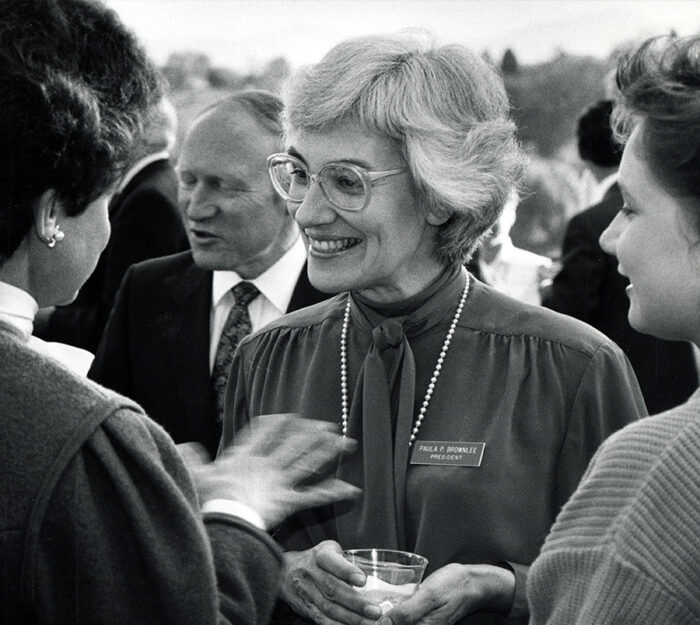
President Paula Brownlee was inaugurated on April 4, 1982. During her tenure, several construction and renovation projects were undertaken, including the building of the Riding Center and Northen Swimming Center, the renovation of Fishburn Library, and acquisition of the Huff Farm Barn. The Sulphur Spring building was also moved to make room for the gymnasium expansion. She oversaw the creation of Hollinsummer program; Hollins also received 18 computers through a grant from IBM for a student microcomputer laboratory. It was during her time at Hollins that “The Rock” got its first coat of paint, beginning its career as a community message board.
-
Carroll W. Brewster 1975 – 1981
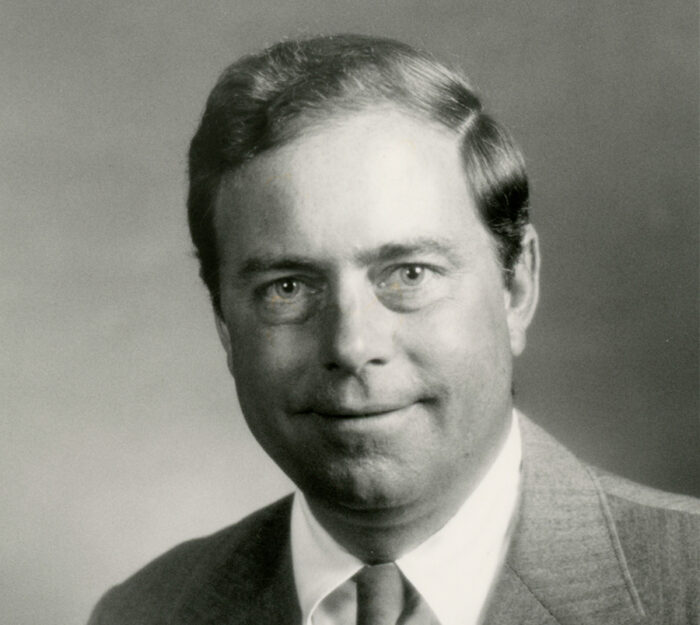
President Carroll Brewster was inaugurated on February 21, 1976. During his tenure, Moody Center was built, Botetourt Hall and East were renovated, and Bradley Auditorium was converted to a recital hall (now Talmadge Recital Hall). The Front Quadrangle also received National Historic status designation. In 1977, Fishburn Library got its first computer (for cataloging). He oversaw the first Honors Convocation and the opening of the writing center. Hollins Scholars Program and the Hollins Outdoor Program (HOP) started during this time as well.
-
John A. Logan, Jr. 1961 – 1975
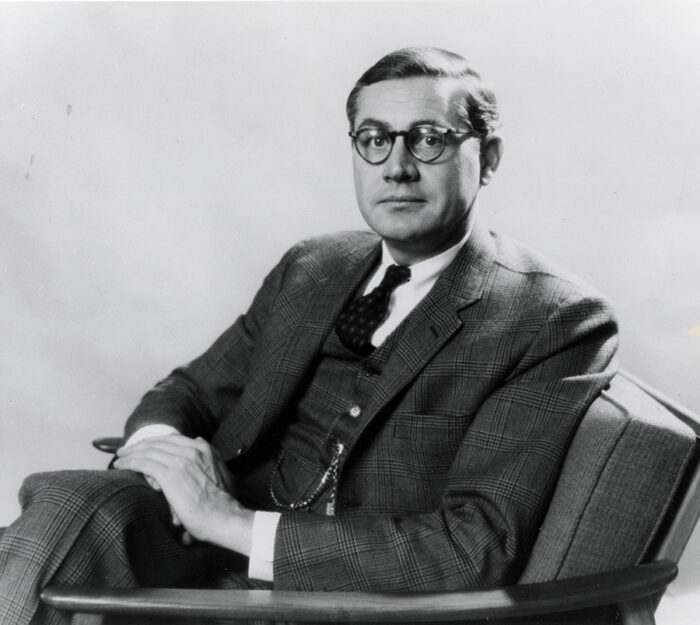
President John Logan was inaugurated on April 14, 1962. He oversaw more campus expansion, including the construction of Tinker Dormitory, Dana Science Building, and the new president’s house. The Hollins College Apartments were also acquired during this time. He also directed development of the first long-range, comprehensive master campus plan, including the moving of Carvins Creek. “The Rock” was dug up during this time and placed near Dana Science Building. The 125th anniversary of Hollins was celebrated during his tenure; the first Hollins Medal is awarded on Founder’s Day as part of the celebration.
Logan also oversaw several academic changes, including the adoption of the “new curriculum”, the establishment of Short Term (J-Term), and independent exam system, the establishment of the Master of Art in liberal studies program, Hollins Abroad-London, and the Horizon program. The first The Hollins Critic was published by the English department, and Frances Niederer’s Hollins: an Illustrated History was also published. Hollins got its first computer during this time.
-
John Rutherford “Jack” Everett 1950 – 1960
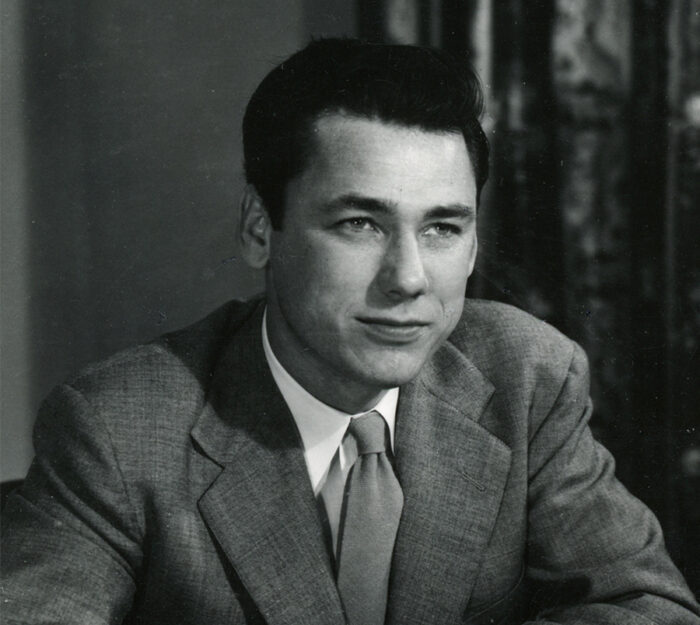
President John Everett was inaugurated on April 16, 1951. Campus continued to expand, adding Faculty Row, Turner Hall, Randolph Hall, Fishburn Library (now the Wetherill Visual Arts Center), duPont Chapel, and the Hill Building (now the library annex). As president, he established a progressive new curriculum, the Hollins Abroad-Paris program, and brought the first visiting scholars to campus; he also established new graduate programs in psychology and English. During his tenure, the first career office was initiated, along with the development office and annual fund. He awarded Hollins’ first honorary degree to Mrs. Jessie Ball duPont, member of the Board of Trustees, philanthropist, and namesake of the duPont Chapel. He also oversaw the first Parent’s Day (later known as Family Weekend) and the first literary festival.
-
Bessie Carter Randolph 1933 – 1950
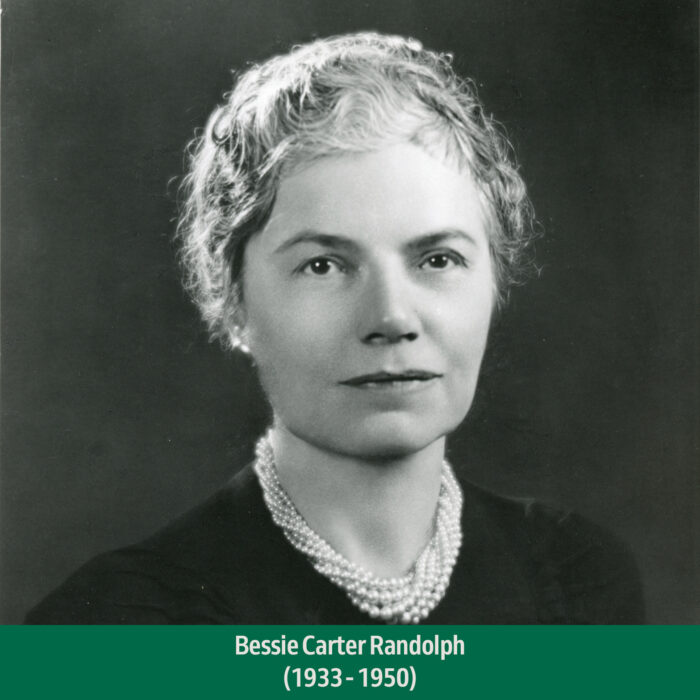
Bessie Carter Randolph’s inaugural ceremony was held on Founder’s Day, February 21, 1934. She was the first Hollins president to receive an inaugural ceremony. She oversaw the centennial celebration in 1942, and encouraged publication of Dorothy Vickery’s Hollins College, 1842-1942, an Historical Sketch.
Thanksgiving became a school holiday during her time; prior to this, the students stayed at school during Thanksgiving, marking the day with a basketball game and a feast.
Like her predecessors, Randolph oversaw campus construction and renovation, including Barbee, Tinker Tea House (now Cromer Bergman Alumnae House), and the Art Annex, and initiated the planning of Turner Hall. She established the academic divisions still in use today, those of Humanities, Social Sciences, Natural Sciences, and Fine Arts. The seminar was introduced as a teaching device for seniors.
-
Matty Cocke 1901 – 1933
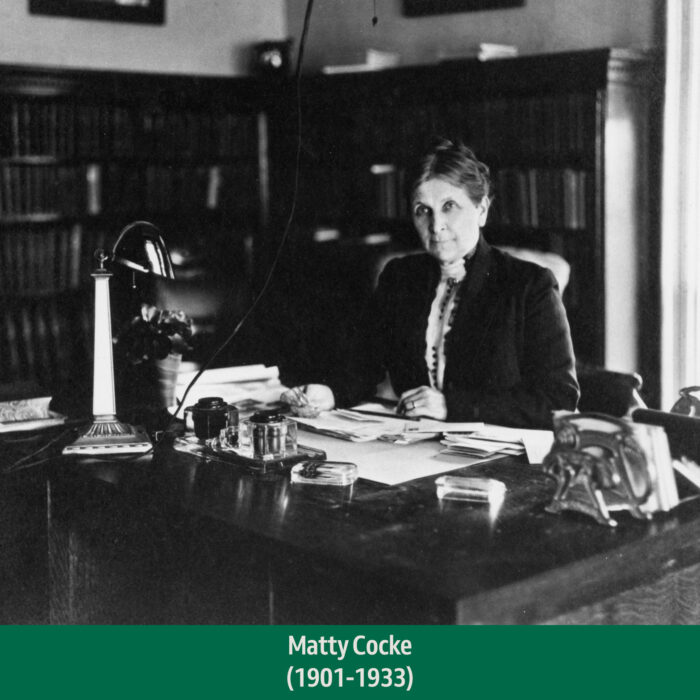
Martha Louisa Cocke, or “Miss Matty,” as she was affectionately known, assumed the presidency immediately following her father’s death in 1901. With her inauguration, she became the first woman college president in Virginia. She oversaw a massive construction and renovation campaign including: Robbie Burton Alumnae Cottage, Rath Haus, Charles Lewis Cocke Memorial Building, Swannanoa, Rose Hill, Malvern Hill, French House, Pleasants Hall, Duchouquet, Little Theatre, the Gymnasium, Presser Hall, Eastnor, Beale Garden, the power plant, a new sewage system, enlargement of the reservoir on the mountain, and the renovation of Pleasants after a fire in 1925.
Miss Matty also introduced academic changes, offering A.B. and B. music degrees, which replaced the “full graduate” diploma; she established the school of music, eliminated the preparatory department, and established faculty committees, including Freshmen Advising. During her tenure as president, Hollins changed its status from an institute to a college.
-
Charles Lewis Cocke 1846 – 1901

Charles L. Cocke assumed the position of superintendent of Valley Union Seminary, the original name of the university, on July 1, 1846. Although he is honored as the founder of Hollins, he actually took over control of the institute from the Board of Trustees; his leadership of the institute in the following decades allowed Hollins to survive and thrive. During his tenure as superintendent and then president, campus expanded with the construction of several buildings, including East, the Sulphur Springhouse, Main, Bradley, Sandusky, the Parsonage, Carvin, Botetourt, and West.
Cocke also oversaw several academic changes. When Valley Union was first established, it was a coeducational institution. He eliminated the male department, established high academic standards, and set a goal to provide the same training for women as men, a first for women’s education in Virginia. In 1855, John and Ann Hollins donated $5,000 to the school, inspiring its renaming to Hollins Institute. Also during Cocke’s years as president, the Alumnae Association was established, and the first literary magazine and first Spinster (yearbook) were published.
INTERIM PRESIDENTS:
Willard James (Interim) 1960 – 1961
Samuel Spencer (Interim) 1990 – 1991
Walter Rugaber (Interim) 2001 – 2002
Wayne Markert (Interim) 2004 – 2005
Nancy Oliver Gray (Interim) 2019 – 2020

